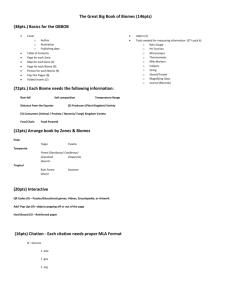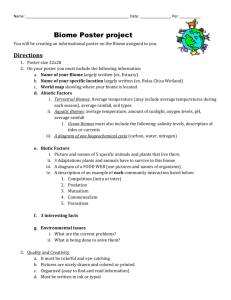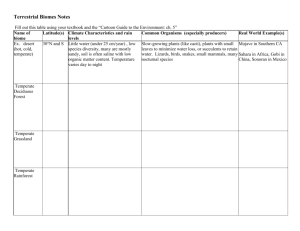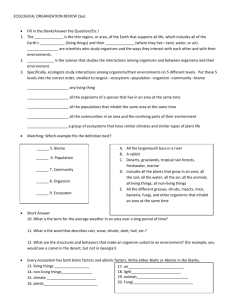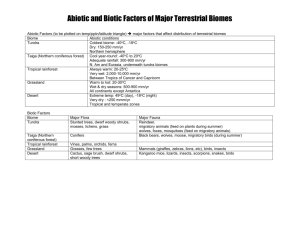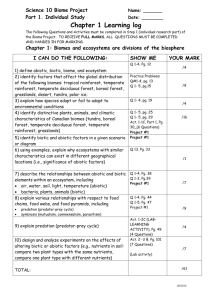Biomes questions
advertisement
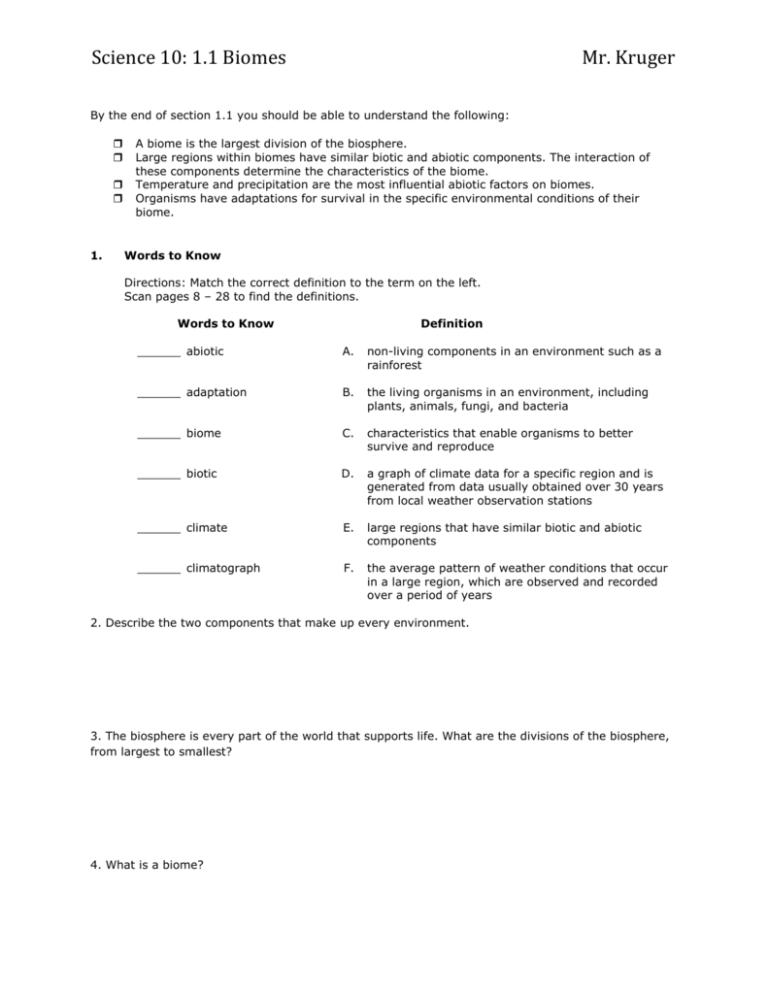
Science 10: 1.1 Biomes Mr. Kruger By the end of section 1.1 you should be able to understand the following: 1. A biome is the largest division of the biosphere. Large regions within biomes have similar biotic and abiotic components. The interaction of these components determine the characteristics of the biome. Temperature and precipitation are the most influential abiotic factors on biomes. Organisms have adaptations for survival in the specific environmental conditions of their biome. Words to Know Directions: Match the correct definition to the term on the left. Scan pages 8 – 28 to find the definitions. Words to Know Definition ______ abiotic A. non-living components in an environment such as a rainforest ______ adaptation B. the living organisms in an environment, including plants, animals, fungi, and bacteria ______ biome C. characteristics that enable organisms to better survive and reproduce ______ biotic D. a graph of climate data for a specific region and is generated from data usually obtained over 30 years from local weather observation stations ______ climate E. large regions that have similar biotic and abiotic components ______ climatograph F. the average pattern of weather conditions that occur in a large region, which are observed and recorded over a period of years 2. Describe the two components that make up every environment. 3. The biosphere is every part of the world that supports life. What are the divisions of the biosphere, from largest to smallest? 4. What is a biome? Science 10: 1.1 Biomes Mr. Kruger 5. What are the 8 terrestrial biomes? Place a small * beside each biome that can be found in Canada. 6. What are the two most important abiotic factors that influence a biome? 7. Which biome would you most likely find an average annual temperature of 10°C with an average annual precipitation amount of 215 mm? 8. What is latitude? Which latitudinal zone receives the most direct sunlight? Which latitudinal zone receives the most annual rainfall? 9. Why and how does elevation influence temperature and precipitation?

